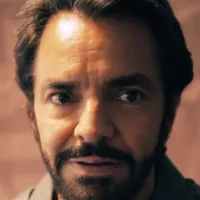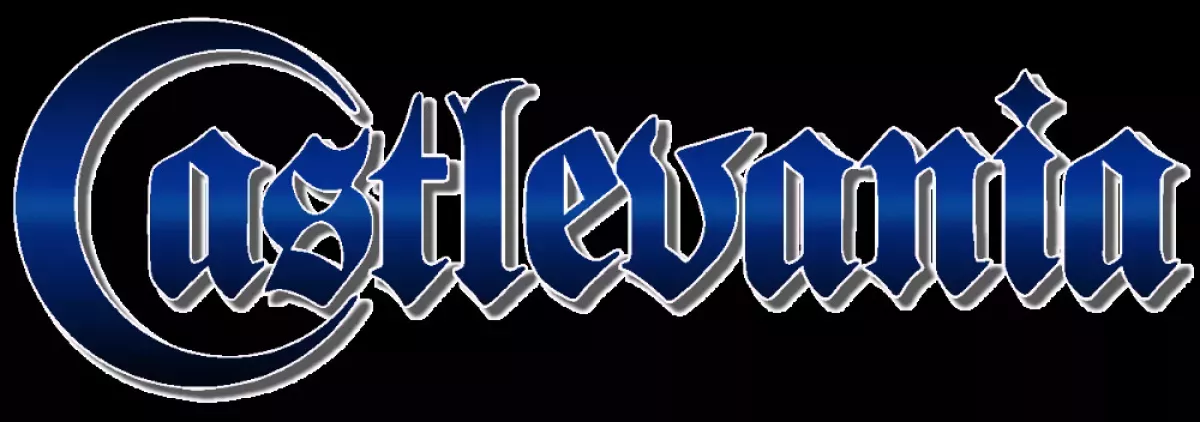Castlevania, known as Akumajō Dracula in Japan, is a gothic horror action-adventure series created by Konami. Primarily set in Dracula's castle, the games feature the Belmont clan, a family of vampire hunters, fighting against Dracula. The series has expanded beyond video games into various media forms, including animation and comics.
1943: Son of Dracula Film Release
The 1943 film "Son of Dracula" introduced the character Alucard, who later appeared in the Castlevania series.
1986: Castlevania's Console Debut and Vampire Killer
1986 saw the release of Castlevania on the Famicom Disk System and NES, establishing core series features. A different version, Vampire Killer, was also released for MSX.
1986: Castlevania Development and Release
Castlevania was developed by Hitoshi Akamatsu, drawing inspiration from horror films. It was released on the NES in 1986 after initial success on the FDS.
1986: Castlevania Debut
The Castlevania series debuted in 1986 with the release of the first game on the Famicom Disk System, introducing its side-scrolling action platformer gameplay.
1987: Castlevania II: Simon's Quest Release
Castlevania II: Simon's Quest, released in 1987, introduced RPG elements, a non-linear world, and day-night cycles, diverging from the original game's linear platforming.
1987: Simon's Quest Introduces Nonlinear Gameplay
Castlevania II: Simon's Quest, released in 1987, introduced nonlinear exploration and RPG elements, diverging from the traditional platforming style.
1988: Haunted Castle Brings Arcade Action
In 1988, Haunted Castle brought the Castlevania series to arcades, returning to linear platforming.
1989: Unaired Castlevania Animated Series
A Castlevania animated series was considered but not produced for the "Super Mario Bros. Power Hour" block in 1989.
1989: Castlevania III: Dracula's Curse Release
Castlevania III: Dracula's Curse was released in 1989. This installment returned to the traditional platforming style of the original Castlevania. Due to the commercial success of Konami's Teenage Mutant Ninja Turtles games, Dracula's Curse's development was impacted, as resources were prioritized for the more popular franchise.
1989: Expanding the Castlevania Universe
The Castlevania universe expanded in 1989 with the handheld title Castlevania: The Adventure and the NES sequel Castlevania III: Dracula's Curse, which introduced new features like alternate stages and playable characters.
1990: Kid Dracula Spins Off
Kid Dracula, a parody platformer spin-off, was released for the Famicom in 1990.
1991: Super Castlevania IV Arrives on SNES
1991 saw the release of Super Castlevania IV, the first 16-bit entry in the series, for the Super Nintendo Entertainment System.
1992: Belmont's Revenge Continues the Handheld Saga
Castlevania II: Belmont's Revenge continued the Game Boy's Castlevania storyline in 1992.
1993: Parallel Development of Three Castlevania Games
1993 marked the beginning of parallel development for three Castlevania titles: Akumajō Dracula, Rondo of Blood, and Bloodlines. Rondo of Blood, directed by Toru Hagihara, was notable for being the first installment on CD-ROM and featuring full voice acting.
1993: Early Castlevania Sales Milestone
By 1993, the Castlevania franchise had sold over 3.7 million units.
1993: Castlevania for X68000 and Rondo of Blood Launch
Castlevania launched on the Sharp X68000 in 1993, later localized as Castlevania Chronicles. Also released in 1993 was Castlevania: Rondo of Blood for the PC Engine, featuring CD-ROM enhancements.
1993: Hitoshi Akamatsu Interview
Hitoshi Akamatsu gave an interview about the development process of the game.
1994: Bloodlines Debuts on Sega Genesis
Castlevania: Bloodlines was released for the Sega Genesis in 1994, marking the series' debut on a Sega console.
1995: Castlevania: Dracula X
Castlevania: Dracula X, reusing content from Rondo of Blood, was released for the SNES in 1995.
1997: Symphony of the Night and Legends Released
1997 saw the release of Castlevania: Symphony of the Night for PlayStation and Castlevania Legends for Game Boy.
1997: Development of Dracula 3D Begins
Development began on the first 3D Castlevania game, initially titled Dracula 3D, for the Nintendo 64 in 1997.
1997: Castlevania: Symphony of the Night Release
In 1997, Castlevania: Symphony of the Night expanded on Simon's Quest's RPG elements and non-linear gameplay, becoming influential in the Metroidvania genre.
1997: Symphony of the Night Revolutionizes Gameplay
In 1997, Castlevania: Symphony of the Night marked a shift in the series, bringing back nonlinear exploration and adding RPG elements, which later influenced the "Metroidvania" genre.
1999: Castlevania (N64) and Legacy of Darkness Release
In 1999, Dracula 3D was released as Castlevania for the Nintendo 64, followed by an expanded version, Castlevania: Legacy of Darkness, in the same year.
1999: Castlevania (Nintendo 64) Retconned
The Nintendo 64 Castlevania game and others were removed from the series canon in different years such as in 2002, due to storyline inconsistencies.
1999: Castlevania Enters 3D on Nintendo 64
The first 3D Castlevania game was released for Nintendo 64 in 1999, followed by an expansion, Legacy of Darkness.
2001: Chronicles Brings X68000 to PlayStation
Castlevania Chronicles, based on the Sharp X68000 title, was released on PlayStation in 2001.
2001: Circle of the Moon Begins GBA Era
Castlevania: Circle of the Moon began the Game Boy Advance era for the series in 2001.
2001: Castlevania: Circle of the Moon Release
Castlevania: Circle of the Moon was released in 2001 as a Game Boy Advance launch title. It marked the return of Metroidvania-style gameplay since Symphony of the Night.
2002: Several Castlevania Titles Retconned
In 2002, several Castlevania games were removed from the official timeline, a decision that sparked fan debate.
2002: Castlevania Games Retconned and KCEK Dissolved
Koji Igarashi removed several titles, including Castlevania Legends and KCEK-developed games, from the series canon in 2002 due to story inconsistencies. Konami Computer Entertainment Kobe (KCEK) was also dissolved in the same year.
2003: Harmony of Dissonance and Aria of Sorrow Launch
Castlevania: Harmony of Dissonance and Castlevania: Aria of Sorrow continued the series on the Game Boy Advance in 2003.
2003: Lament of Innocence Debuts on PlayStation 2
Castlevania: Lament of Innocence, a 3D action title, launched on PlayStation 2 in 2003.
2003: Castlevania: Lament of Innocence Release
Castlevania: Lament of Innocence, a 3D title intended as a new starting point for the series, was released in 2003.
2005: Dawn of Sorrow Arrives on DS
Castlevania: Dawn of Sorrow, a sequel to Aria of Sorrow, was released for Nintendo DS in 2005.
2005: Castlevania: The Belmont Legacy Release
IDW Publishing released the graphic novel "Castlevania: The Belmont Legacy", based on Castlevania: The Adventure, in 2005.
2006: Castlevania Timeline Poster Released
A timeline poster included with a 2006 pre-order bundle reintroduced some previously retconned Castlevania games, except for Legends.
2006: Castlevania Sales Milestone
By 2006, the Castlevania franchise had surpassed 20 million copies sold globally.
2006: Portrait of Ruin Released on DS
Castlevania: Portrait of Ruin launched on the Nintendo DS in 2006.
2006: Castlevania: Portrait of Ruin Release
Castlevania: Portrait of Ruin, released in 2006 for the Nintendo DS, continued the new art style introduced in Dawn of Sorrow, aiming to appeal to a wider audience.
2006: Castlevania: Curse of Darkness Manga Completion
The two-volume manga adaptation of Castlevania: Curse of Darkness concluded its publication in Japan in 2006.
December 2007: Castlevania Film Halted
Development on the Castlevania film was halted in December 2007 due to a writer's strike.
2007: Konami's Official Stance
In 2007, Konami's official Japanese website maintained the exclusion of certain Castlevania titles from the established canon.
2007: Castlevania Toy Line Release
NECA launched a Castlevania toy line, including figures of Simon Belmont, Alucard, Dracula, Succubus, and a Comic-Con exclusive Pixel Simon in 2007.
2007: Dracula X Chronicles Revives Rondo of Blood
Rondo of Blood was localized and included in Castlevania: The Dracula X Chronicles for the PlayStation Portable in 2007.
2007: Lament of Innocence Cellphone Comic Release
The cellphone comic adaptation of Lament of Innocence began its release in Japan in 2007.
2007: Castlevania Animated Film Script
Warren Ellis wrote a script for a Castlevania animated film in 2007, which ultimately did not go into production. This script heavily influenced the Netflix series.
2008: Judgment Brings Fighting to the Wii
Castlevania Judgment, the series' first fighting game, was released for the Wii in 2008.
2008: Castlevania: Order of Ecclesia Release
Castlevania: Order of Ecclesia was released in 2008, marking the end of the new art style adopted in Dawn of Sorrow and Portrait of Ruin.
2008: Order of Ecclesia Concludes DS Trilogy
Castlevania: Order of Ecclesia, the final DS entry, was released in 2008.
2008: Competing Castlevania Prototypes in Development
In 2008, multiple Castlevania prototypes were in development, including a project by Koji Igarashi and Castlevania: Lords of Shadow by MercurySteam.
2008: Castlevania in Guinness World Records
In 2008, trivia related to the Castlevania series was included in the Guinness World Records: Gamer's Edition.
2008: Michiru Yamane's Last Castlevania Score
Michiru Yamane, a prominent composer for the Castlevania series, scored her last Castlevania game, Order of Ecclesia, in 2008, collaborating with Yasuhiro Ichihashi. This marked the end of her tenure as a composer for the series before becoming a freelance composer.
2008: English Release of Curse of Darkness Manga
The English version of the "Castlevania: Curse of Darkness" manga was released in 2008.
May 27, 2009: Castlevania Film Cancellation
The planned Castlevania film was officially canceled on May 27, 2009.
2009: Castlevania: The Arcade Released
Castlevania: The Arcade, a light gun shooter, was released in Japan and Europe in 2009.
2009: The Adventure ReBirth Reimagines a Classic
In 2009, Castlevania: The Adventure ReBirth, a remake of the original Game Boy title, was released for WiiWare.
2010: Castlevania – The Concert
Castlevania – The Concert, featuring music from the series, was performed in Stockholm, Sweden in 2010 by composer Michiru Yamane and the Stockholm Youth Symphonic Orchestra.
2010: Harmony of Despair Offers Multiplayer Action
Castlevania: Harmony of Despair, an online multiplayer title, was released in 2010.
2010: Castlevania: Lords of Shadow Release
Castlevania: Lords of Shadow, a 3D action-adventure reboot, was released in 2010. It was produced by Dave Cox and Hideo Kojima, featuring celebrity voice actors and a new art style. The game became the best-selling title in the series.
2010: Lords of Shadow Reboots Franchise
The Castlevania franchise was rebooted with Castlevania: Lords of Shadow in 2010, a 3D action game developed by MercurySteam and co-produced by Hideo Kojima.
2011: Igarashi Moved to Konami's Social Division
Koji Igarashi was moved to Konami's social division in 2011, which contributed to his later departure from the company.
2013: Castlevania: Lords of Shadow - Mirror of Fate Release
Castlevania: Lords of Shadow - Mirror of Fate, a sequel to Lords of Shadow, was released in 2013.
2013: Mirror of Fate Released on 3DS
Castlevania: Lords of Shadow – Mirror of Fate was released for Nintendo 3DS in 2013.
March 2014: Igarashi Leaves Konami
In March 2014, Koji Igarashi left Konami to independently develop Bloodstained: Ritual of the Night, a spiritual successor to Castlevania.
2014: Castlevania: Lords of Shadow 2 Release
Castlevania: Lords of Shadow 2, the final installment in the Lords of Shadow trilogy, was released in 2014. It received less positive reception than its predecessor.
2014: Lords of Shadow 2 Concludes Reboot Trilogy
Castlevania: Lords of Shadow 2, the last mainline game to date, was released in 2014, concluding the reboot trilogy.
2017: Netflix's Castlevania Series Premiere
Netflix premiered the animated series "Castlevania" in 2017.
2017: Pachislot Lords of Shadow Released
Pachislot Akumajō Dracula: Lords of Shadow, based on the reboot series, was released in 2017.
September 19, 2019: Grimoire of Souls Launches on iOS
Castlevania: Grimoire of Souls, a mobile game, was released on iOS via Apple Arcade on September 19, 2019.
2019: Bloodlines Returns in Anniversary Collection
Castlevania: Bloodlines was re-released as part of the Castlevania Anniversary Collection in 2019.
2019: Warren Ellis Departure
Following allegations of sexual misconduct in 2019, Warren Ellis was not involved in the production of "Castlevania: Nocturne".
2019: Kid Dracula Included in Anniversary Collection
The original Kid Dracula was released in English for the first time as part of the Castlevania Anniversary Collection in 2019.
2021: Rumors of a Castlevania "Reimagining"
Rumors of a "reimagining" of the Castlevania series began circulating in 2021.
2021: Netflix's Castlevania Series Conclusion
The final season of Netflix's "Castlevania" series aired in 2021, concluding the show.
September 28, 2023: Castlevania: Nocturne Premiere
The sequel series, "Castlevania: Nocturne," premiered on Netflix on September 28, 2023.
2024: Haunted Castle Revisited in Dominus Collection
A remake of Haunted Castle, titled Haunted Castle Revisited, was included in the Castlevania Dominus Collection in 2024.
2024: Ode to Castlevania DLC Released for Vampire Survivors
Vampire Survivors released the "Ode to Castlevania" DLC in 2024, featuring Castlevania characters and weapons.
Mentioned in this timeline
PlayStation is a video game brand by Sony Interactive Entertainment...

Nintendo is a Japanese multinational video game company based in...

An apple is a widely cultivated edible fruit originating in...
Japan is an East Asian island country situated in the...

Ninjas or shinobi were covert agents in pre-modern Japan They...

Music is a cultural universal involving the arrangement of sound...
Trending
7 months ago Prague dethroned as best place to live; David Lynch exhibition opens at DOX.

Eugenio Derbez is a highly successful Mexican actor and comedian renowned for his work in both Spanish and English language...

2 months ago Angela Bassett As Queen Ramonda Stuns At Vogue World 2025; Black Panther Tribute.

8 months ago Tesla Board Initiated CEO Search to Replace Elon Musk Amidst Leadership Concerns.

9 months ago Milo Manheim and Liz Gillies bond in Little Shop of Horrors, extend run.

1 month ago Alexander Skarsgård reminds Miriam Margolyes of their meeting; addresses sexuality question, states 'not really' gay.
Popular

Stranger Things created by the Duffer Brothers is a popular...

XXXTentacion born Jahseh Dwayne Ricardo Onfroy was a controversial yet...

Kelsey Grammer is an accomplished American actor producer and singer...

Candace Owens is an American conservative political commentator and author...

Bernie Sanders is a prominent American politician currently serving as...

Melania Trump a Slovenian-American former model has served as First...
